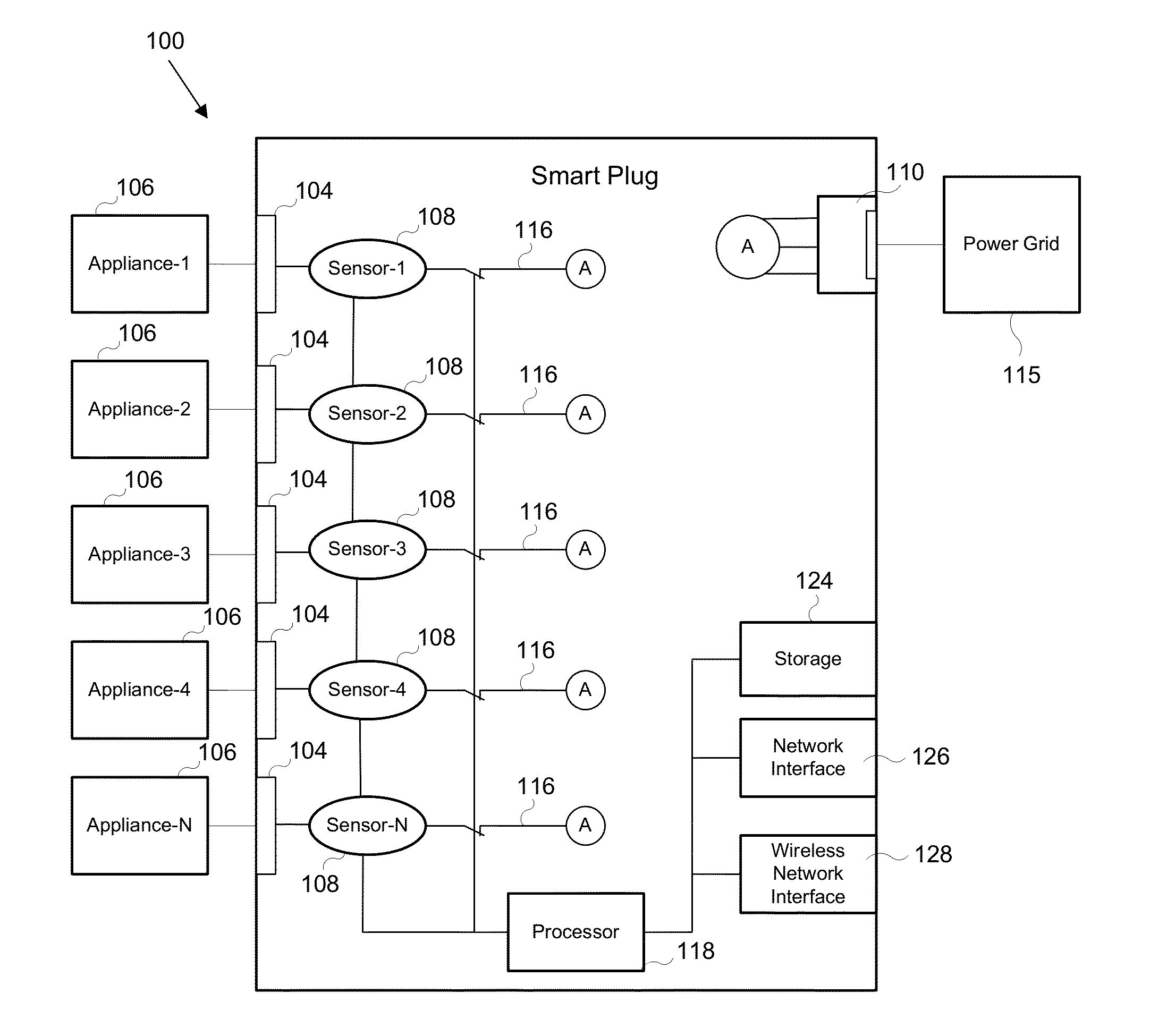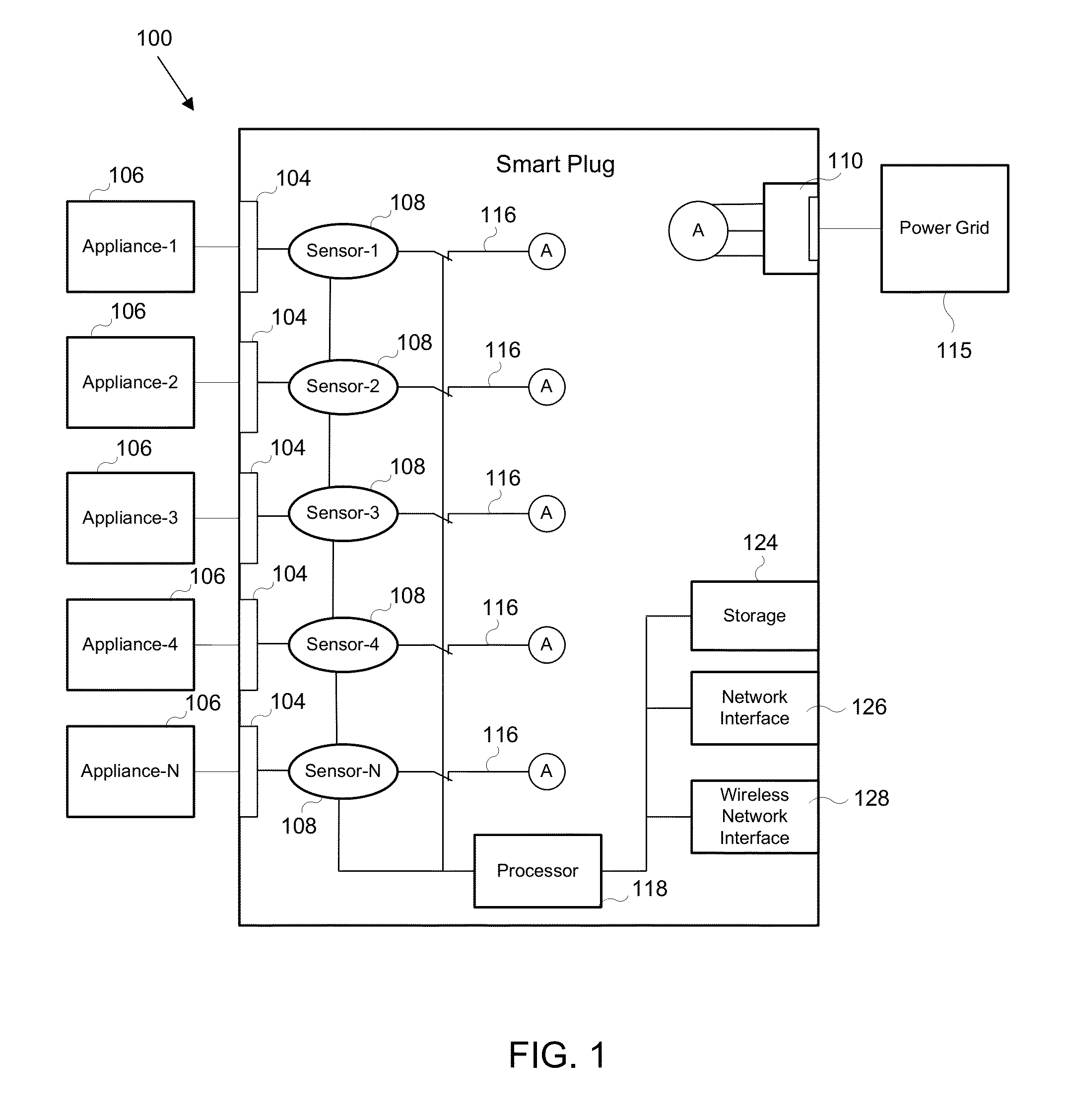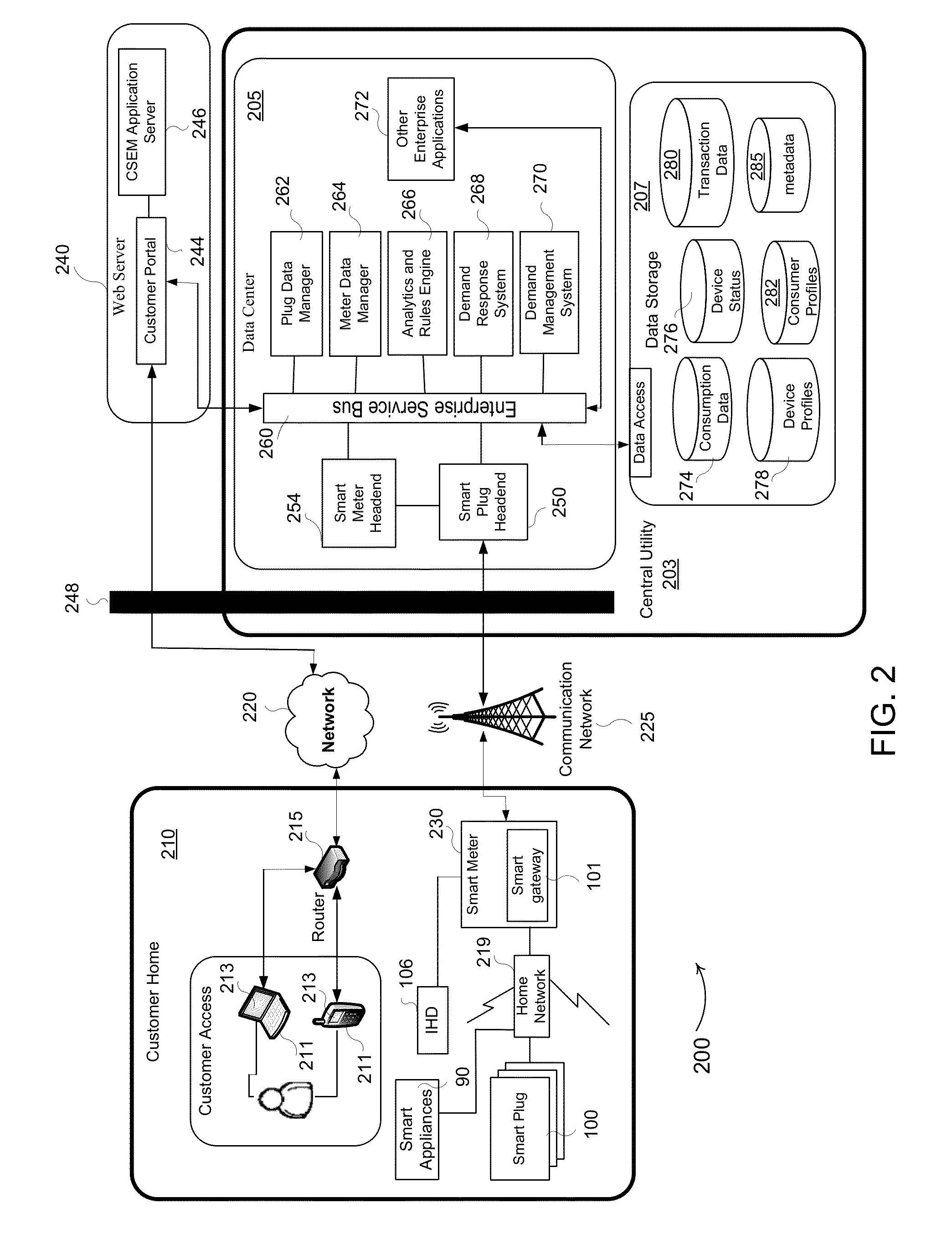Customer-centric demand side management for utlities
a demand side and customer-centric technology, applied in the direction of power network operation system integration, liquid/fluent solid measurement, sustainable buildings, etc., can solve the problems of increasing the cost of utilities, affecting the day-to-day lives of consumers, and affecting the quality of life of consumers, so as to achieve efficient and cost-effective
- Summary
- Abstract
- Description
- Claims
- Application Information
AI Technical Summary
Benefits of technology
Problems solved by technology
Method used
Image
Examples
Embodiment Construction
[0028]By way of overview, the example embodiments described below relate to a method and system for reducing power demand on a power grid through demand side management by customers of a central utility of a power grid. The central utility accounts for customer preferences and sends one or more commands to control the customer's power consumption. In one aspect, the central utility communicates with one or more smart plugs in order to control power consumption. In particular, one or more smart plugs may be used at the customer residences in different locations of the power grid, such as throughout the power grid. The smart plug improves control of the appliances (or devices) whose power consumption is unable to be controlled remotely, accounting for customer-assigned priorities and / or allowing the central utility to control the appliances, thereby obviating the need to upgrade to more expensive smart appliances. In another aspect, the central utility may communicate with one or more...
PUM
 Login to View More
Login to View More Abstract
Description
Claims
Application Information
 Login to View More
Login to View More - R&D
- Intellectual Property
- Life Sciences
- Materials
- Tech Scout
- Unparalleled Data Quality
- Higher Quality Content
- 60% Fewer Hallucinations
Browse by: Latest US Patents, China's latest patents, Technical Efficacy Thesaurus, Application Domain, Technology Topic, Popular Technical Reports.
© 2025 PatSnap. All rights reserved.Legal|Privacy policy|Modern Slavery Act Transparency Statement|Sitemap|About US| Contact US: help@patsnap.com



